The Conservation team recently bored USS Monitor’s 2 XI-inch Dahlgren cannons. This was a huge step in the objects’ treatment. It came from a need, but also required the right expertise, a TON of planning, donor funding, and specially crafted parts to make it happen. This task was completed for absolutely no archaeological reason. It needed to happen to conserve the artifacts and, therefore, it happened, but that doesn’t mean that archaeological interpretation didn’t benefit from the project.
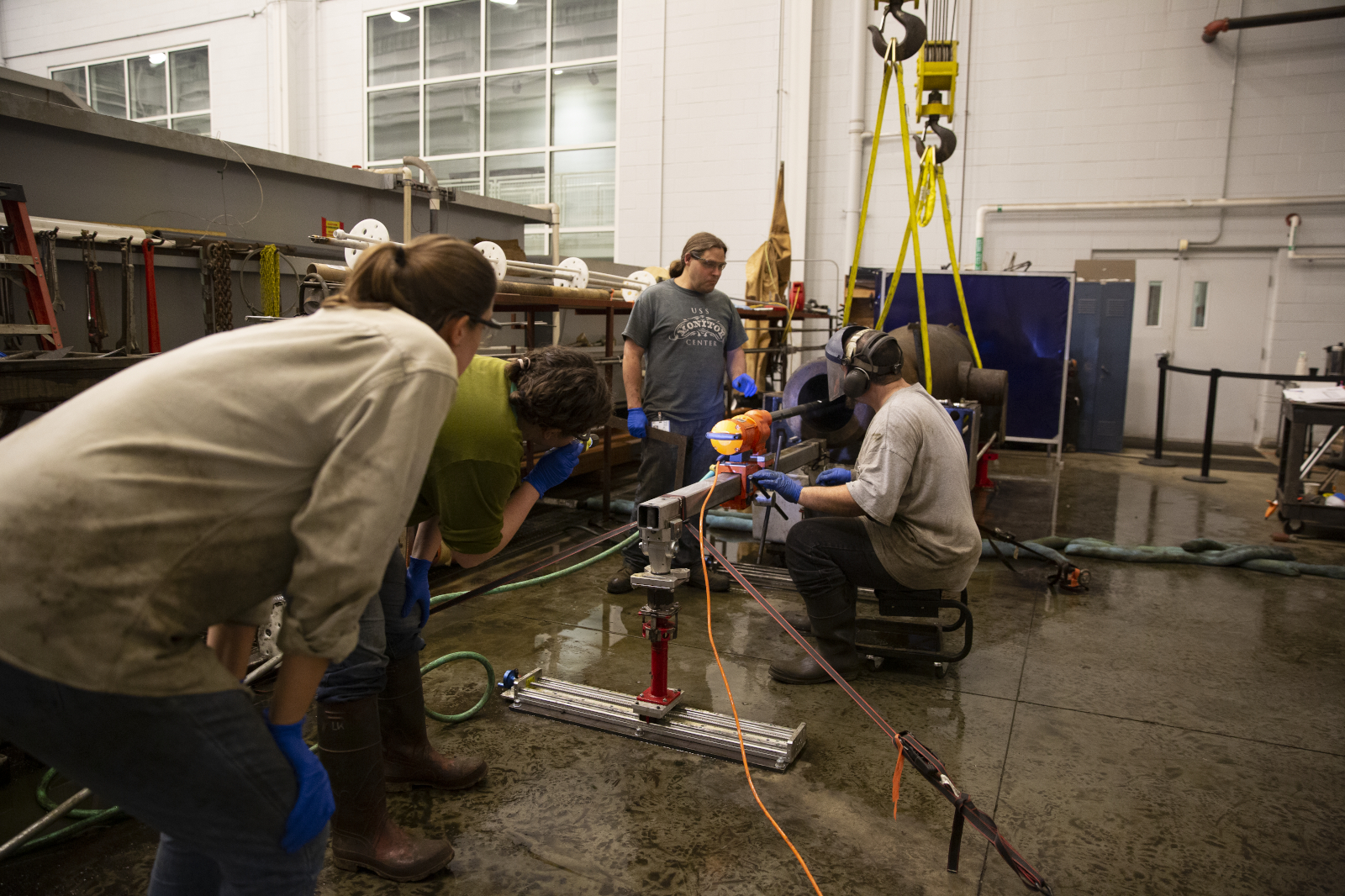
So, here is my tale of why coal is cool…
To accomplish “archaeological investigation” of the concretions which came out of the guns’ bores, we set up a screening station at which the screeners – me, and the poor fools I tricked into helping me (our CEO Howard, our intern Christy, and our volunteer Heidi) – broke up the concretion into smaller bits of concretion until it fit through the screen and we could say with fair certainty that there were no artifacts left inside. This is a standard archaeological practice called sifting. What is maybe unique about our situation, is that since everything belongs to NOAA, we don’t get rid of the dirt and rock after its sifted, we bury it and save it in case there are techniques that it will be useful for in the future. No, I won’t tell you where we bury it. Actually, even I don’t know where, so I couldn’t tell you if I wanted to.
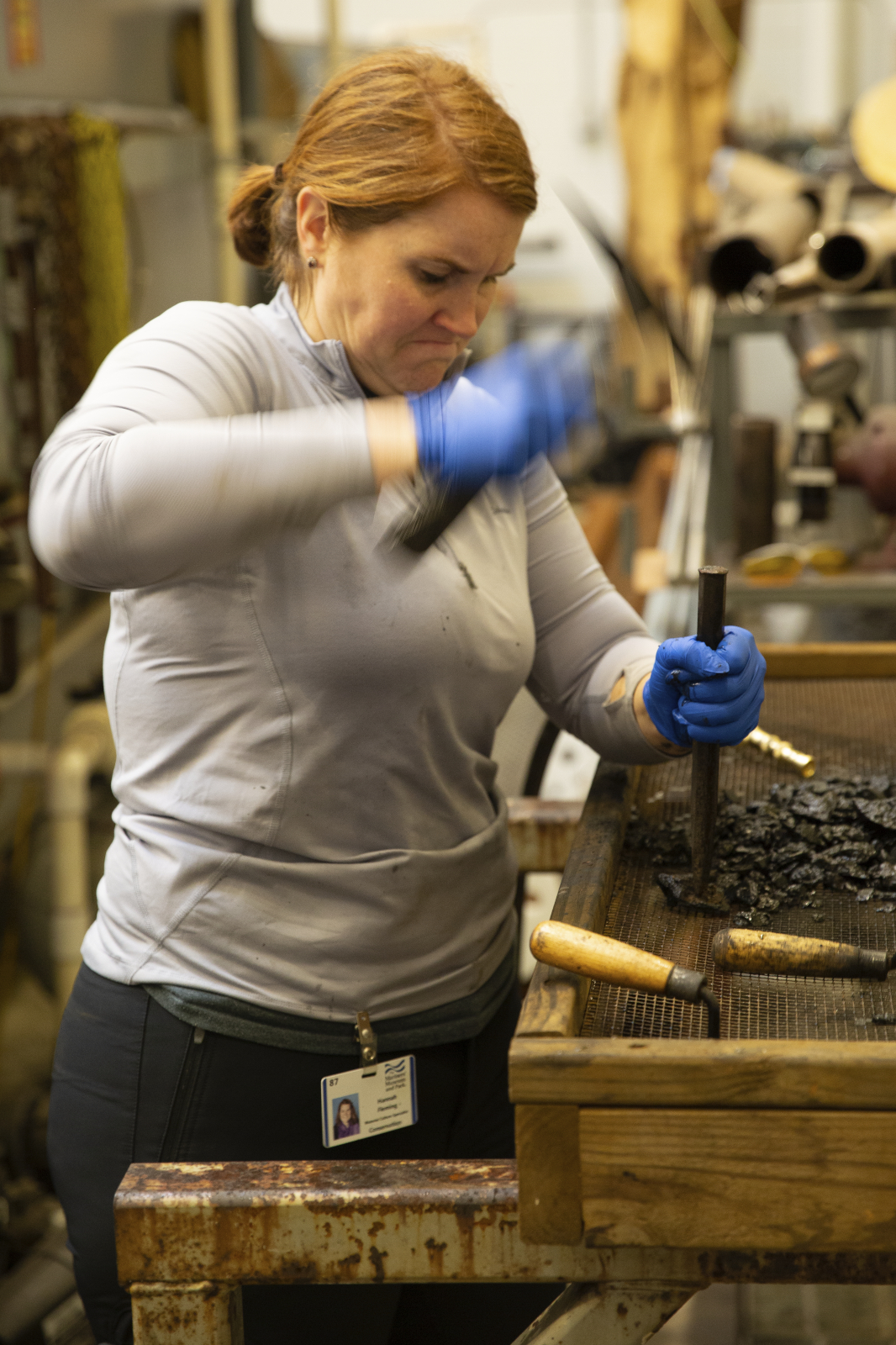
Sure, we didn’t find anything *cool*, in fact we found barely anything, but we did find about two pounds of coal in one cannon and a square headed bolt in the other, along with assorted sea shells and marine materials. No, friends, no cat. And, honestly, isn’t that better than actually finding the cat… trapped… inside a cannon? We can discuss that more later.
Today, I want to talk about why it is cool that we found coal and a bolt…but mostly coal.
Day 1:
We started on the gun marked with “WORDEN, MONITOR & MERRIMAC”. The bore of this gun was more heavily concreted, so the potential for finding stuff was higher. This isn’t the reason that it was picked first, but still. The press was there, and there was a surprising amount of pressure (probably just from myself) to find something. But, when I started finding coal, absolutely no one, but me, was interested in it. Sure, I was breaking apart rocks to find…other rocks…but they are important rocks!
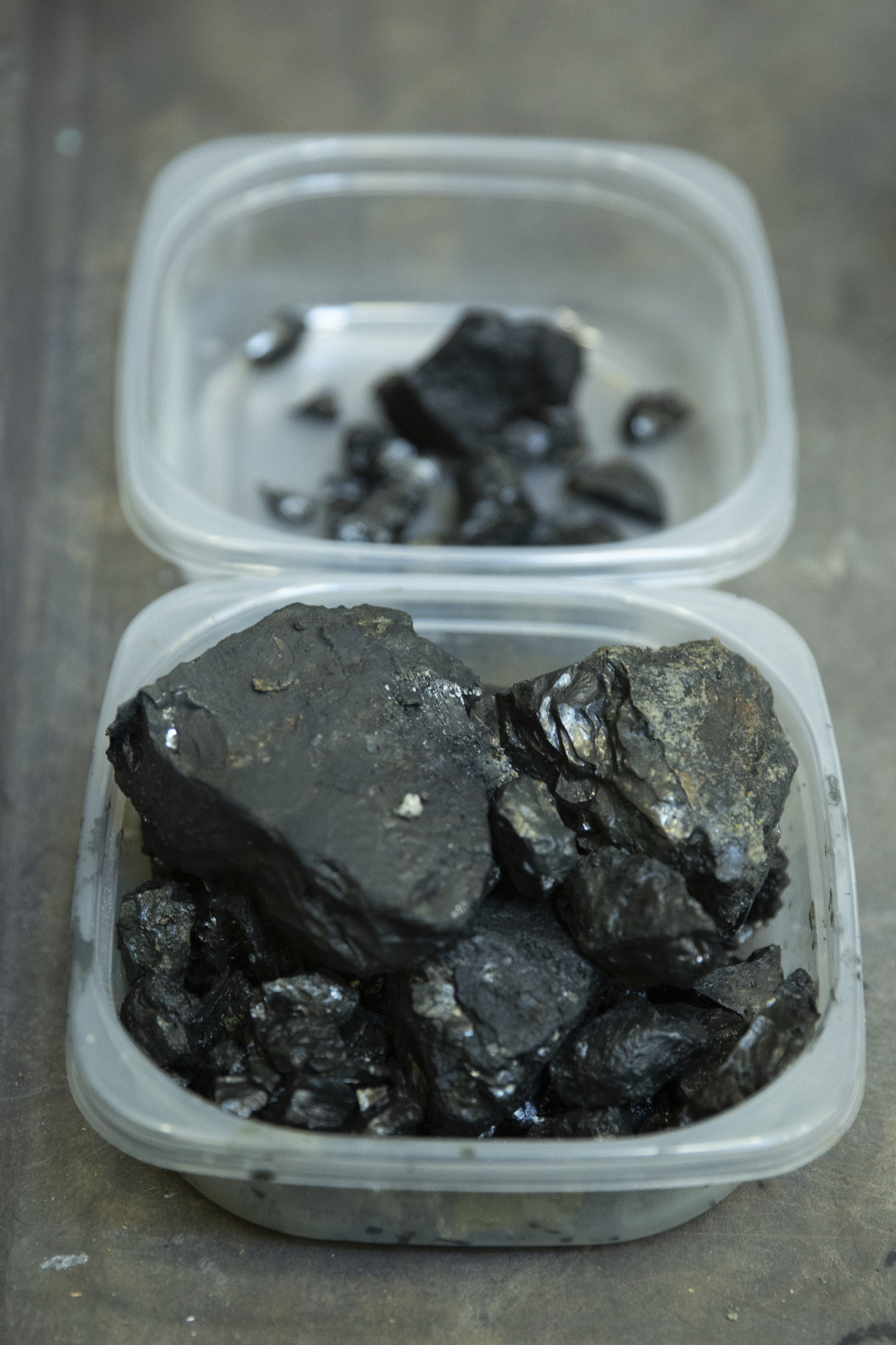
After finding your first dozen or so pieces of coal, you’re kinda ready to find something new. And I can say that I kept finding coal and acting super excited – I mean I was excited, but I was hamming it up for everyone else’s sake – but no one was buying it, and even I was ready for something new.
Nothing new came. And while in the moment, I wanted to find something else, I can say that, archaeologically, its actually totally okay that we didn’t find anything else. As the day wore on, I found more and more coal. After the Museum closed, the President and CEO, Howard, changed out of his nice, clean work clothes and came back to the Museum and started helping me break open rocks. It was nice to have some company, but almost as soon as he got there, we stopped finding coal. Like completely. And that made the task of breaking the rocks apart even more tedious, and probably pretty boring for Howard, but negative evidence is still evidence and we learned more about the timeline when we knew that the coal was in a singular layer inside the gun.
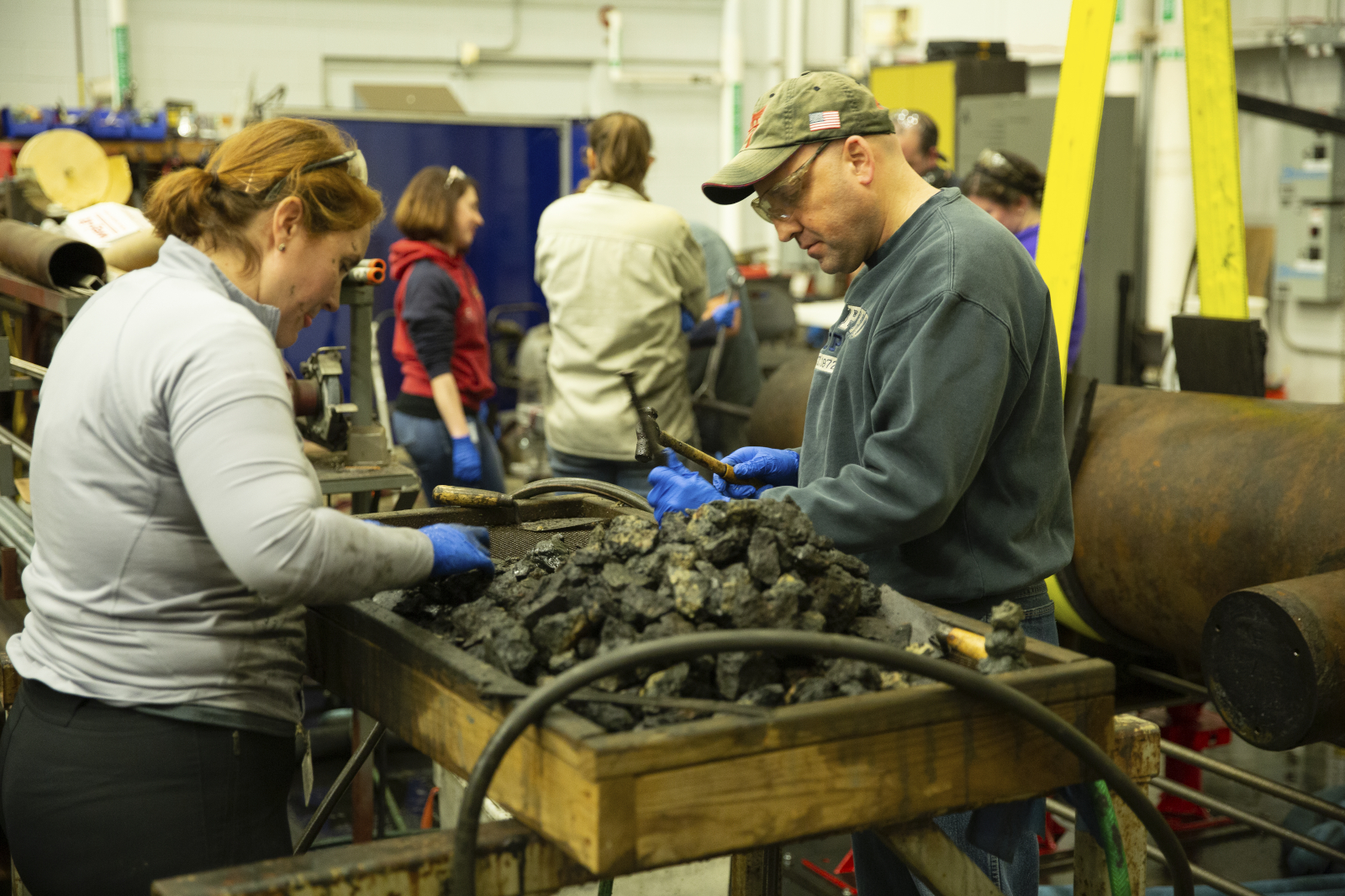
Archaeologists rely a lot on stratigraphy – or the way in which sediment and artifacts are layered in a site. For the guns, we checked relative stratigraphy by accepting all new chunks of concretion as they came out of the gun. When/if we found anything, we could tell which part of the gun it came from because Erik, a conservator and our gun boring specialist, was measuring exactly how far back he was working in the gun (i.e. archaeologically, we were breaking apart the last distance range he wrote down). So, we can say that stratigraphically we found coal continuously from the very front of the Worden gun, back to about 8 feet. Since the bores’ of the guns are approximately 11 feet long, this means the back three feet of the gun were coal-less, and also devoid of all other artifacts – it was just sediment, rock, shell, and dead ocean smell.
Day 2:
The concretion in the second gun, labeled “ERICSSON, MONITOR & MERRIMAC” was not as thick and was therefore, less likely to contain artifacts. The second day, I had two helpers – Christy, a 9-month conservation intern from Durham, UK, and Heidi, a conservation science volunteer who has been working with us for over a year – they were super happy to be there, and I was super happy to have company, even if the concretion was less bulky and easier to break apart. We labored on and on through the concretion, going fast enough that we actually had down times … and we found nothing – not even many seashells!
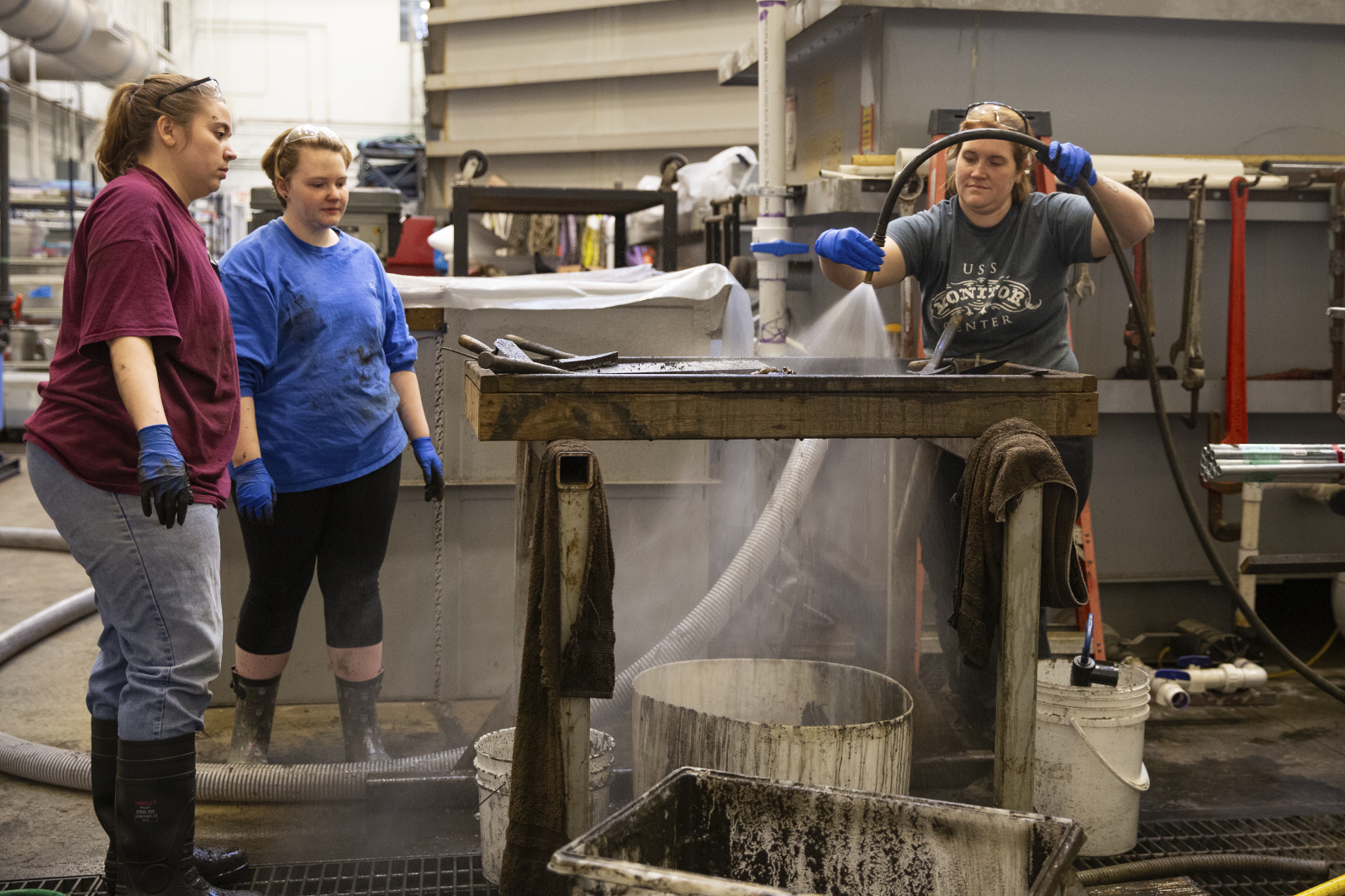
At about the trunnions (7’10” back from the bore) – those perpendicular protrusions about halfway back that support and pivot cannons in their carriages – the concretion matrix changed. It got thicker, and with that our potential to find artifacts increased, but still, we had no luck. Finally, when the drill bit was about 9 feet back, we emptied the catch bucket that had been sitting below the cannon during boring to catch some of the water, most of the sludge, and all of the concretion pieces that fell out before the drill bit was removed. In that load of stuff, we actually found something – a singular square headed bolt! We were super excited to finally, FINALLY, find anything. From that point on, we broke into every piece with a bit more vigor and hope. We found nothing else.
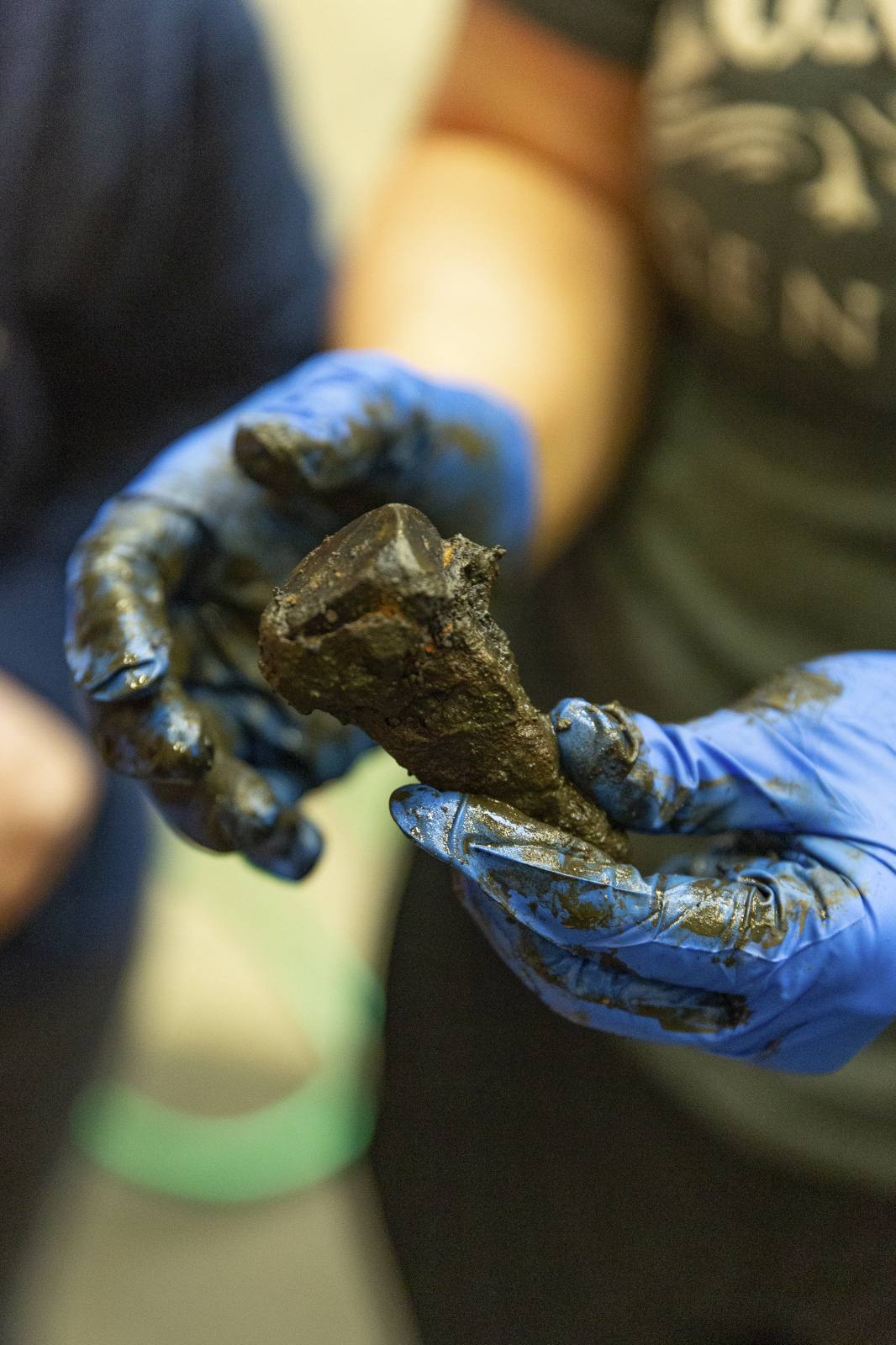
Alright, now that I’ve droned on about what we found, and where we found it, let’s talk about why it’s important to the interpretation of the shipwreck:
1. Finding anything in the guns tells us that the guns were not tamped – or plugged, generally with a wooden piece – which further disproves Butts’ 1887 account of the sinking (the story about the cat). Butts claims, “I occupied the turret all alone, and passed buckets from the lower hatchway to the man on the top of the turret. I took off my coat … and, rolling it up with my boots, drew the tompion from one of the guns, placed them inside, and replaced the tompion. A black cat was sitting on the breech of one of the guns, howling … I would almost as soon have touched a ghost, but I caught her, and, placing her in another gun, replaced the wad and tompion; but I could still hear that distressing howl.”
More important than disproving Butts, this is an interesting archaeological tidbit, as the ship was completely prepared to go to sea – the crew took days making sure everything was secure; so why didn’t they tamp the guns? We found absolutely no evidence of tampions in the turret; not just in the guns or near the guns, in the turret at all. Sure, these were likely wooden and could have deteriorated, but finding anything inside the guns proves that the tampions were not there during the sinking. One can still argue that they may have fallen out during the sinking. Yes, it’s a possibility, but evidence is stacking up against it.
2. Now onto the main event, coal! Sure, we have like 10 tons of coal from USS Monitor. Most of it was found in the turret. In fact, the turret was quite literally filled with coal. All of it was meant to power the ship’s engines. Coal was an important part of how this ship, and a lot of others in the Civil War functioned. But that is not why finding it inside the gun is exciting.
The stratigraphic evidence, of finding coal at the front of the gun and not at the back, is actually really telling. Having 3 feet of sediment devoid of coal or other artifacts at the back of the gun says that there was time for that much sediment to lodge inside the gun before the coal even had the chance to get inside. In other words, the coal bunker (which landed on top of the turret during the sinking) didn’t spill into the turret during the sinking. The coal bunker broke and spilled into the turret later – sometime between 1863 and 2001.
Okay, okay, maybe that information is only cool to me. But, when we talk about the over 30 pieces of silverware found laying on the turret’s roof (remember its upside down!), we have always said there were two theories as to why it was there:
A) The coal bunker and the galley (which are right next to each other) could have broken at the same time and silverware and coal spilled into the turret together.
B) The sailors could have been bringing silverware into the turret to try to save the valuables during the sinking; realized that the weight of the silverware wasn’t worth their lives and they ditched it.
Now that we know the coal bunker broke later, we can say with more certainty that the silverware was taken into the turret by the sailors! See, coal is cool.
3. The square headed bolt is mostly just interesting! We have lots of components with square headed bolts and all the bolt heads are deteriorated. Some of them are amazingly stable (you can turn them with a modern wrench), but they still don’t look like they did at manufacturing. We don’t know what this one came from (not the guns themselves, or the turret structure which has hexagonal bolts), but the head is nearly perfect. We can see how the machinists rounded the edges and “finished” their product. We’re hoping that with some digging we can narrow down what it came from.
It’s also intriguing that it was the singular sinking event artifact found in either gun. The sinking must have been incredibly tumultuous to allow such an artifact to dislodge from its original location and wind up inside one of the guns without letting anything else fall inside.
Archaeology at the Museum looks different than archaeology in the field. I don’t get to dig up many artifacts, but it is still a lot of guess work, investigation, and re-evaluation. Sometimes, seemingly boring finds end up telling us a lot about the story of the ship. Museum archaeology is different, but it’s really satisfying, too; even when it is breaking bigger rocks into littler rocks.